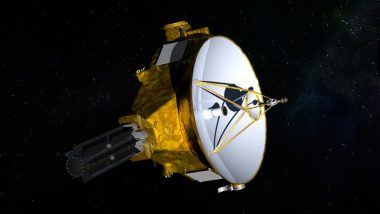National Aeronautics and Space Administration has undertaken so many missions to uncover many mysteries about our planet and the outer space. The latest space probe called New Horizons is among the most historic missions ever as it passes by the most distant object in the space. The most distant flyby around Ultima Thule happens to be the oldest and the farthest cosmic object detected by the humankind. So at least for NASA, the joy of the New year began about 4 billion miles away. But there is something in there for Indians to rejoice too. This historic achievement by NASA has an Indian scientist from Mumbai Dr Shyam Bhaskaran, who plays a key factor in the navigation of New Horizons journey in farthest space. NASA Spacecraft Beams Back First Images of Ultima Thule.
Bhaskaran who works in NASA’s Jet Propulsion Laboratory is born in Mumbai. He left for the US when he was just 5 years old but his achievements have echoed worldwide today. He has been working with NASA since 1992 and has contributed to several missions. He has led the Independent Navigation Team’s which supported the European Rosetta mission, the Japanese Hayabusa 1 and 2 missions, and the Applied Physics Laboratory’s New Horizons Pluto mission. NASA 2019 New Year Calendar Will Feature a Painting of 12-Year-Old Boy From Tamil Nadu, View Pic.
Check Out NASA's Tweet About New Horizons at Ultima Thule
RIGHT NOW, ~1 billion miles past Pluto, @NASANewHorizons is performing the most distant spacecraft flyby ever as it zooms past #UltimaThule, an icy, ancient rock in the Kuiper Belt. Watch live coverage: https://t.co/oJKHgKpQjH pic.twitter.com/U30yazzigo
— NASA (@NASA) January 1, 2019
Talking about the latest mission to Ultima Thule he was quoted to TOI, "But it was not without challenges because we have never done such an encounter of an object which was unknown, small and dark. Finding the object is difficult." Because there were not any other objects around Pluto so the flyby wasn't as hard. Bhaskaran wants to come back to Mumbai to pay a visit. Currently, he and his team are happy that the navigation of the spacecraft looks good. NASA's Hubble Space Telescope Spots Cosmic Smiley Among Colourful Galaxies.
NASA's New Horizons was launched January 19, 2006, bound for Pluto and the point of Ultima Thule was discovered about 8 years later. The spacecraft is still cruising at 32,000 mph and the flyby is amazing since the object was discovered much later than its launch.
(The above story first appeared on LatestLY on Jan 02, 2019 03:47 PM IST. For more news and updates on politics, world, sports, entertainment and lifestyle, log on to our website latestly.com).













 Quickly
Quickly












